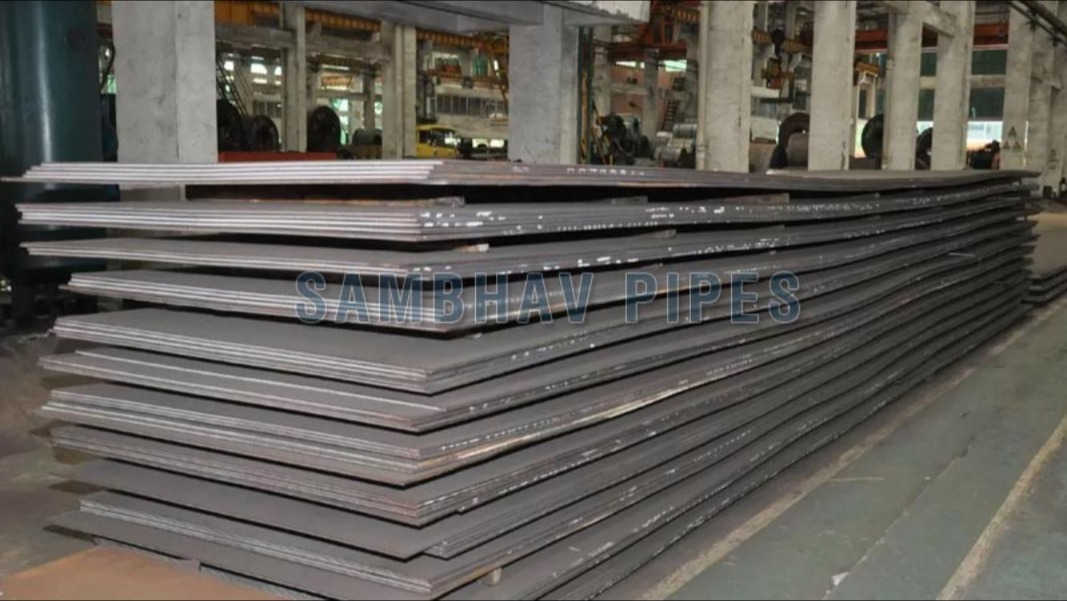Alloy Steel – High-Strength, Heat-Resistant Performance for Critical Applications Alloy Steel is a category of steel that is alloyed with a variety of elements in specific proportions to enhance its mechanical properties, corrosion resistance, toughness, and hardenability. These elements commonly include chromium, molybdenum, nickel, manganese, vanadium, and boron, among others. Unlike plain carbon steel, alloy steel is designed to perform reliably under extreme conditions such as high pressure, elevated temperatures, heavy loads, and corrosive atmospheres. Its tailored composition and heat treatment capability allow it to be precisely adjusted for specific performance demands. Why Use Alloy Steel? Superior mechanical strength and toughness High-temperature and high-pressure resistance Enhanced hardenability and fatigue resistance Excellent wear and impact resistance Improved corrosion and oxidation resistance (in selected grades) Classification: Alloy steels are broadly categorized into two groups: Low Alloy Steel: Contains total alloying elements typically less than 5% High Alloy Steel: Contains alloying elements more than 5%, often used for specialized applications like tool steel or stainless steel Typical Alloying Elements & Their Roles: Element Function Chromium Increases hardness, wear, and corrosion resistance Molybdenum Enhances strength at high temperatures, reduces brittleness Nickel Improves toughness and corrosion resistance Vanadium Adds strength, hardness, and wear resistance Manganese Boosts strength and hardenability Boron Improves hardenability in small amounts Mechanical Properties (Typical Range): Property Value (Approx.) Yield Strength 250 – 1000+ MPa Tensile Strength 400 – 1200+ MPa Elongation 10 – 25% Hardness Varies (up to 60 HRC) Impact Resistance High (varies by grade) Common Grades of Alloy Steel: SA 387 Gr 5/9/11/22/91 – for pressure vessels and high-temperature service EN 19 / EN 24 / EN 31 – for shafts, gears, and automotive components AISI 4130 / 4140 / 4340 – for aerospace, drilling, and forging 16Mo3 / P11 / P22 / T91 – for boiler tubes and heat exchangers Applications Across Industries: Power plants: Boilers, headers, superheaters Oil & gas: Pressure vessels, pipes, and fittings Automotive: Axles, crankshafts, gears Heavy engineering: Shafts, rollers, dies, and tools Aerospace & Defense: Landing gear, engine components Conclusion: Alloy Steel stands at the forefront of industrial-grade materials, offering enhanced performance in challenging environments where ordinary carbon steel may fail. Whether you're building a high-pressure reactor or fabricating critical rotating machinery, alloy steel ensures long-term strength, resilience, and operational reliability.
Chat with us on WhatsApp
×
This is your website preview.
Currently it only shows your basic business info. Start adding relevant business details such as description, images and products or services to gain your customers attention by using Boost 360 android app / iOS App / web portal.
https://www.sambhavpipesfittings.com/latest-update/alloy-steel-high-strength-heat-resistant-perfor/178
Alloy Steel – High-Strength, Heat-Resistant Perfor...

2025-06-20T04:49:12
Alloy Steel – High-Strength, Heat-Resistant Performance for Critical Applications Alloy Steel is a category of steel that is alloyed with a variety of elements in specific proportions to enhance its mechanical properties, corrosion resistance, toughness, and hardenability. These elements commonly include chromium, molybdenum, nickel, manganese, vanadium, and boron, among others. Unlike plain carbon steel, alloy steel is designed to perform reliably under extreme conditions such as high pressure, elevated temperatures, heavy loads, and corrosive atmospheres. Its tailored composition and heat treatment capability allow it to be precisely adjusted for specific performance demands. Why Use Alloy Steel? Superior mechanical strength and toughness High-temperature and high-pressure resistance Enhanced hardenability and fatigue resistance Excellent wear and impact resistance Improved corrosion and oxidation resistance (in selected grades) Classification: Alloy steels are broadly categorized into two groups: Low Alloy Steel: Contains total alloying elements typically less than 5% High Alloy Steel: Contains alloying elements more than 5%, often used for specialized applications like tool steel or stainless steel Typical Alloying Elements & Their Roles: Element Function Chromium Increases hardness, wear, and corrosion resistance Molybdenum Enhances strength at high temperatures, reduces brittleness Nickel Improves toughness and corrosion resistance Vanadium Adds strength, hardness, and wear resistance Manganese Boosts strength and hardenability Boron Improves hardenability in small amounts Mechanical Properties (Typical Range): Property Value (Approx.) Yield Strength 250 – 1000+ MPa Tensile Strength 400 – 1200+ MPa Elongation 10 – 25% Hardness Varies (up to 60 HRC) Impact Resistance High (varies by grade) Common Grades of Alloy Steel: SA 387 Gr 5/9/11/22/91 – for pressure vessels and high-temperature service EN 19 / EN 24 / EN 31 – for shafts, gears, and automotive components AISI 4130 / 4140 / 4340 – for aerospace, drilling, and forging 16Mo3 / P11 / P22 / T91 – for boiler tubes and heat exchangers Applications Across Industries: Power plants: Boilers, headers, superheaters Oil & gas: Pressure vessels, pipes, and fittings Automotive: Axles, crankshafts, gears Heavy engineering: Shafts, rollers, dies, and tools Aerospace & Defense: Landing gear, engine components Conclusion: Alloy Steel stands at the forefront of industrial-grade materials, offering enhanced performance in challenging environments where ordinary carbon steel may fail. Whether you're building a high-pressure reactor or fabricating critical rotating machinery, alloy steel ensures long-term strength, resilience, and operational reliability.
2025-06-20T04:49:12
Keywords
- alloying elements
- elements commonly
- operational reliability
- highpressure reactor
- youre building
- challenging environments
- boiler tubes
- aerospace drilling
- shafts gears
- pressure vessels
- tool steel
- broadly categorized
- oxidation resistance
- toughness hightemperature
- precisely adjusted
- tailored composition
- corrosive atmospheres
- extreme conditions
- perform reliably
- specialized applications
- specific proportions
- ordinary carbon steel
- heat exchangers applications
- specific performance demands
- grade common grades
- heat treatment capability

Submit Your Enquiry